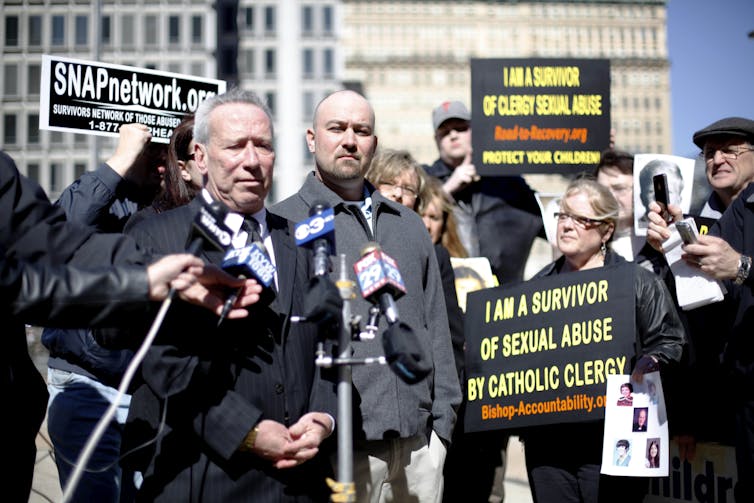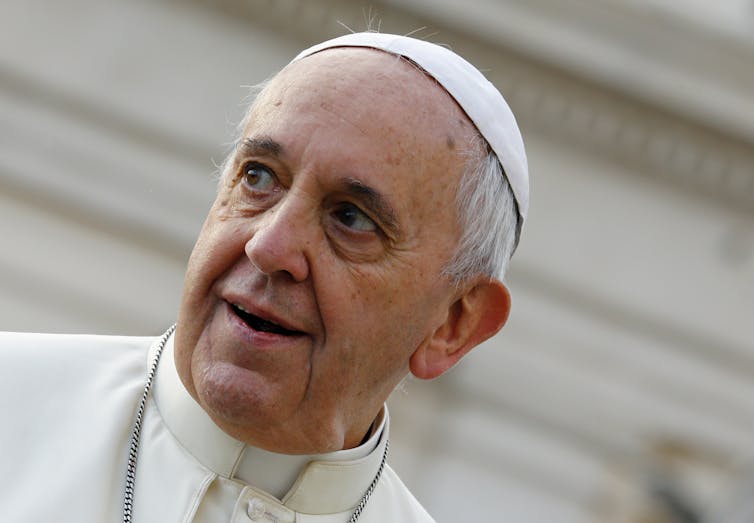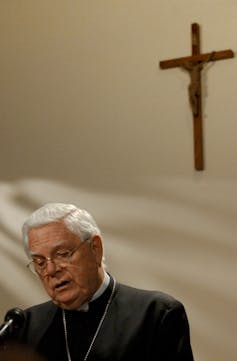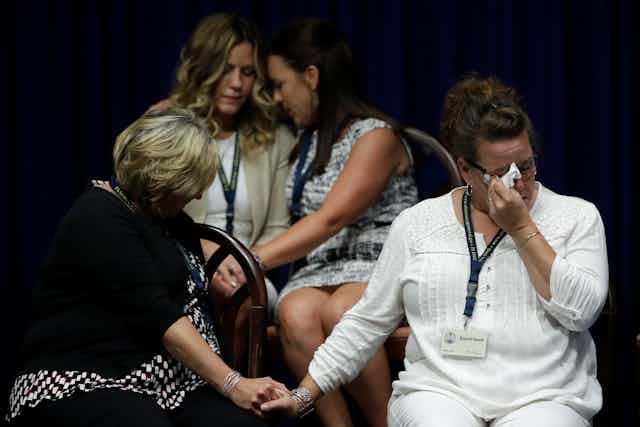Last week, a Pennsylvania grand jury documented 70 years of concerted efforts by Catholic bishops in that state to conceal more than 1,000 cases of child sexual abuse by priests – including rape, sadomasochism and producing child pornography.
These revelations are shocking but not surprising given the history of the church’s sexual abuse scandal.
Since 1984, similar disclosures from around the country have made national headlines and brought shame to the church.
Yet the few criminal prosecutions of church officials for such cover-ups have either been dropped or resulted in small fines or, in one case, probation.
Civil lawsuits – legal claims brought by abuse victims for money damages – have consistently been the only effective way to make Catholic church officials publicly and concretely accountable for their decadeslong cover-up of unspeakable crimes. I argued this in my 2008 book, “Holding Bishops Accountable.” It is still true today.
But victims seeking justice for abuse that in many cases occurred decades ago face a significant legal impediment to mounting such lawsuits – statutes of limitation that limit the number of years that a victim has to file a lawsuit.
Unless lawmakers across the country pass reforms to extend or suspend the statute of limitations in their states, I believe that the church will never provide a full accounting of the scandal.

A brief history of the scandal
Church files around the country contain complaints of child sexual abuse by priests dating back to the 1930s. By the 1970s, the National Conference of Catholic Bishops supported the development of programs within the church specifically designed to treat priests who sexually abused minors.
From the 1960s to the 2000s, when victims complained to church authorities, bishops quietly referred priests to treatment programs and then transferred them to other parishes where congregants were unaware of the danger that they posed. Church officials also admonished victims not to voice their complaints to anyone else lest they bring scandal on the church.
In 1984, a Louisiana lawyer successfully sued the Lafayette diocese on behalf of a 10-year-old boy and obtained a million-dollar verdict. The boy was one of dozens of victims molested by Father Gilbert Gauthe.
The lawsuit revealed that church officials moved Gauthe and other priests from parish to parish for more than a decade whenever victims complained.
Subsequently, state authorities prosecuted Gauthe for his crimes, and he went to prison. Additional lawsuits brought on behalf of abuse victims against the Lafayette diocese for covering up similar crimes forced the diocese to pay those victims more than US$22 million.
Prior to civil lawsuits like those in Louisiana in the 1980s, public officials, including police and prosecutors, typically refused to investigate or prosecute perpetrators because they were unwilling to confront powerful local Catholic bishops eager to conceal crimes by priests.
By contrast, trial lawyers, motivated by a mix of righteous indignation and the prospect of lucrative contingency fees, filed a growing number of civil lawsuits against church officials.
The Gauthe case in 1984 set off a slow and steady chain reaction. Litigation generated media coverage. Media coverage emboldened increasing numbers of victims to come forward. As an increasing number of victims realized that they had not only been abused by priests but betrayed by bishops, they filed new lawsuits.
Successive waves of litigation pushed the scandal into national headlines in the mid-1980s, again in the mid-1990s and, most dramatically, in 2002.
The media coverage of clergy sexual abuse during these periods of heightened attention to the scandal was based primarily on documents from lawsuits. The Boston Globe’s Pulitzer Prize-winning Spotlight Team, as the movie about their work makes clear, relied heavily on the pioneering work of trial lawyers in their reporting on the clergy sexual abuse scandal in the Boston archdiocese.
As media coverage stoked growing public outrage, grand jury investigations and criminal prosecutions eventually followed, starting with a 2002 Westchester County, New York, grand jury report that documented efforts by church officials to cover up sexual abuse of children by priests.

‘A few bad apples’
Catholic bishops and other church defenders have consistently attempted to blame the scandal on “a few bad apples” in the priesthood. They have offered periodic public apologies and instituted a series of reforms. However, only five U.S bishops have resigned for their active concealment of clergy sexual abuse.
In the wake of the Pennsylvania grand jury report, the U.S. Conference of Catholic Bishops is calling for a Vatican investigation of Cardinal Theodore McCarrick, former archbishop of Washington, D.C., who stands accused of molesting children and young seminarians for decades.
This focus on McCarrick’s crimes is a new version of the bishops’ “bad apples” strategy of deflection. The real issue is not the abusers but the church officials who provided them refuge from prosecution and, in the process, enabled them to abuse thousands more victims with impunity.
Bishops are also again offering public displays of contrition and promises of reform. In many cases, they have apologized for the misdeeds of their predecessors and peers, emphasizing that much of the abuse alleged in the recent Pennsylvania grand jury report is from decades ago and that church reforms have dramatically reduced the incidence of abuse.
But this misses the point. Although the abuse in many cases took place long ago under the watch of prelates who have since died or retired, the cover-up continues today. It has taken 35 years of civil litigation, investigative journalism and grand jury probes to uncover what appears to be merely a small portion of an ongoing conspiracy at the highest levels of the church to conceal crimes.
In 2014, Pope Francis appointed a special commission to advise him on responding to the scandal. But the pope has failed to implement its recommendation to establish a Vatican tribunal to hold bishops accountable for their misdeeds. In the wake of the Pennsylvania grand jury report, the pope offered an apology but no concrete plans to further investigate the cover-up or sanction the bishops responsible for it.

Civil lawsuits
I believe that civil lawsuits remain the most effective way to hold the bishops accountable.
The Vatican remains unable or unwilling to sponsor a credible investigation and to punish bishops who continue to conceal sex crimes. Criminal prosecution is not an option because in most cases the statute of limitations has expired and cannot be retroactively extended due to a series of U.S. Supreme Court rulings.
As they have in the past, more civil lawsuits filed by victims could compel bishops to disclose additional information still hidden away in secret diocesan archives and to answer questions under oath in recorded depositions.
Moreover, civil lawsuits would continue to provide a platform for ongoing media coverage and would likely provide hundreds of millions of dollars in settlements for victims.
Statutes of limitation
Civil litigation has been most effective in a handful of jurisdictions where state legislatures have passed laws extending or temporarily suspending the civil statute of limiations.
This allows victims who come forward decades after their abuse to file lawsuits. To be sure, there are valid concerns about the difficulties of obtaining reliable evidence decades after an event. Nevertheless, I believe these concerns are outweighed by the need for full disclosure and accountability.
Church leaders, however, have led successful lobbying efforts to defeat such legislation, including in Pennsylvania.
Whether the Pennsylvania grand jury report will generate the necessary pressure to convince legislators to extend or suspend the statute of limitations and open up the door to more civil litigation is not clear. But the only realistic path to holding bishops accountable is through that door.

